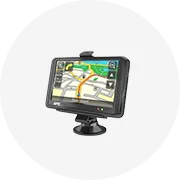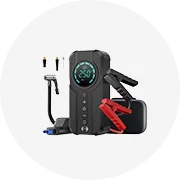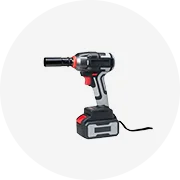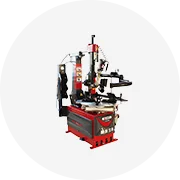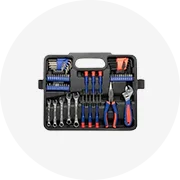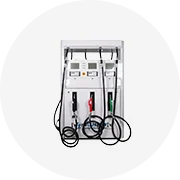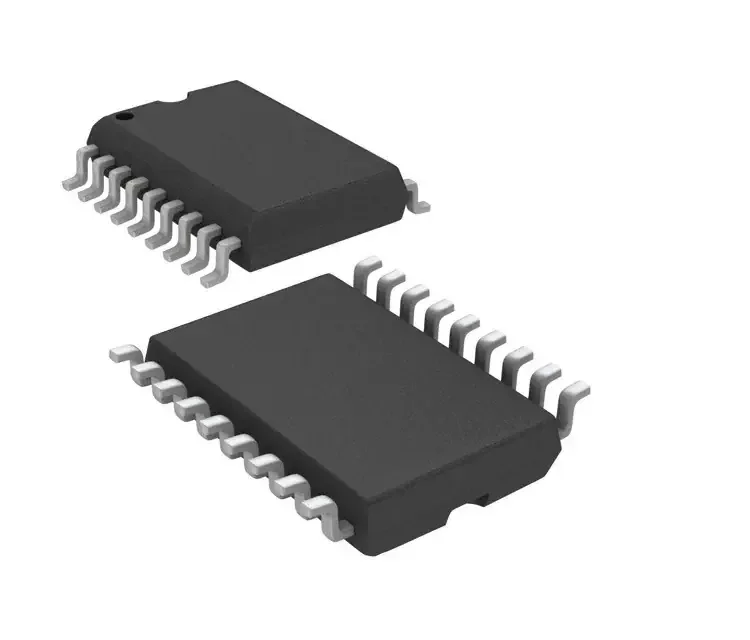Types of JCB Diagnostic Tools
JCB diagnostic tools are essential equipment for monitoring, maintenance, and troubleshooting of JCB construction vehicles. These specialized tools provide technicians and operators with critical insights into machine performance, enabling efficient maintenance and timely repairs.
JCB Codes
Machine-specific access codes that allow authorized personnel to interact with control systems for specific JCB equipment.
Primary Function: Security and access control for diagnostic operations
Best For: Authorized service technicians requiring secured access to JCB machinery systems
JCB Service Tool (JST)
A specialized diagnostic tool designed specifically for JCB vehicles that communicates with various electronic control units (ECUs).
Primary Function: In-depth diagnostics, programming, and real-time parameter monitoring
Best For: Professional technicians requiring comprehensive diagnostic capabilities
JCB Diagnostic Software
Compatible software applications that work with JCB vehicles through diagnostic interfaces, offering detailed analysis capabilities.
Primary Function: Reading/clearing fault codes, live data monitoring, component programming
Best For: Service centers handling various JCB models requiring extensive diagnostic functions
JCB Livelink
Advanced telematics system that enables remote monitoring and diagnostics of JCB machines in real-time.
Primary Function: Fleet management, remote performance monitoring, preventive maintenance
Best For: Fleet operators and companies managing multiple JCB machines across locations
| Diagnostic Tool | Key Features | Primary Users | Connectivity |
|---|---|---|---|
| JCB Codes | Security access, authorization protocols | Certified technicians | Direct machine interface |
| JCB Service Tool (JST) | ECU communication, programming, parameter monitoring | Service professionals | Direct connection to machine ports |
| JCB Diagnostic Software | Fault code analysis, live data streaming, component coding | Service centers, mechanics | Diagnostic interface with computer |
| JCB Livelink | GPS tracking, remote diagnostics, maintenance alerts | Fleet managers, operators | Cellular/satellite communication |
Expert Tip: For comprehensive diagnostic capabilities, consider using a combination of JCB Service Tool for in-depth repairs and JCB Livelink for proactive monitoring. This dual approach enables both preventive maintenance and responsive troubleshooting.
Specifications and Features of JCB Diagnostic Tools
While JCB machines vary by model, all diagnostic tools must meet certain specifications to ensure proper functionality and compatibility. Understanding these key specifications helps in selecting the right diagnostic equipment for your needs.
Input Voltage
Must be compatible with the machine's electrical system to properly read and interpret data from the ECU and other vital systems.
Display Quality
Needs clear visibility in various lighting conditions with sufficient size to display fault codes, live data, and system information clearly.
Communication Interface
Requires OBD-II, CAN, or proprietary interfaces to connect with various machine systems and exchange diagnostic data.
Operating System
Must support diagnostic applications with adequate processing power and memory for complex diagnostic operations and real-time analysis.
Software Updates
Regular updates enable compatibility with new models and incorporate the latest diagnostic functions and fault codes.
Battery Life
Extended battery capacity allows for prolonged field use without frequent recharging, essential for remote operation.
Connectivity Options
USB, Bluetooth, or Wi-Fi capabilities facilitate data transfer, updates, and communication with external devices.
Multilingual Support
Multiple language options accommodate international users, enhancing usability across different regions.
Essential Compatibility Chart for JCB Diagnostic Tools
| JCB Equipment Category | Recommended Diagnostic Tool | Key Diagnostic Functions |
|---|---|---|
| Excavators | JST with Excavator Module | Hydraulic system diagnostics, engine performance analysis |
| Backhoe Loaders | JST or JCB Diagnostic Software | Transmission diagnostics, loader/backhoe function testing |
| Wheeled Loaders | JST with Loader Module | Drive system analysis, load sensing calibration |
| Telehandlers | JST or JCB Livelink | Boom operation diagnostics, stability system monitoring |
| Compact Equipment | JCB Diagnostic Software | System checks, operational parameter configuration |
Maintenance of JCB Diagnostic Tools
Proper maintenance of JCB diagnostic equipment ensures reliable performance, accurate readings, and extended service life. Follow these maintenance guidelines to keep your diagnostic tools in optimal condition.
Regular Maintenance Tasks
- Software Updates: Regularly install the latest updates to access new features, bug fixes, and compatibility with newer models
- Data Backup: Periodically save diagnostic data, configurations, and settings to prevent loss of critical information
- Calibration: Check and maintain calibration according to manufacturer specifications for accurate readings
- Physical Cleaning: Remove dust, dirt, and debris from the tool, screen, and especially connectors using appropriate cleaning materials
Preventive Measures
- Proper Storage: Keep the diagnostic tool in a clean, dry environment away from extreme temperatures
- Careful Handling: Use protective cases during transport and avoid dropping or physical impacts
- Connection Care: Ensure proper connection procedures to prevent connector damage or communication errors
- Battery Management: Follow correct charging procedures and avoid complete battery depletion
Important: Never connect or disconnect the diagnostic tool while the machine is running or the ignition is on. This can damage both the diagnostic tool and the machine's electronic systems. Always power down the equipment before connecting diagnostic devices.
| Maintenance Task | Frequency | Importance | Notes |
|---|---|---|---|
| Software Updates | Monthly or as released | Critical | Ensures compatibility with newer models and provides latest diagnostic capabilities |
| Data Backup | Weekly or after major diagnostics | High | Prevents loss of important diagnostic history and custom configurations |
| Connector Cleaning | After each use | High | Prevents communication errors and extends connector life |
| Screen/Case Cleaning | Weekly | Medium | Maintains visibility and prevents buildup of debris that could affect operation |
| Calibration Check | Quarterly | High | Ensures accurate readings and proper diagnostic performance |
| Battery Conditioning | Every 3 months | Medium | Full discharge/recharge cycle to maintain battery health |
How to Choose the Right JCB Diagnostic Tool
Selecting the appropriate JCB diagnostic tool requires careful consideration of your specific needs, equipment fleet, and operational requirements. Follow this systematic approach to make an informed decision.
Identify Your Equipment Portfolio
Begin by documenting all JCB machines in your fleet, including models, years, and specific systems. Different JCB models may require specialized diagnostic tools or software modules. A comprehensive inventory ensures compatibility between your equipment and the diagnostic solution.
Assess Diagnostic Requirements
Determine the depth of diagnostic capabilities needed. Consider whether you need basic fault code reading, comprehensive system analysis, programming functionality, or remote monitoring capabilities. Your maintenance strategy and technical expertise will influence this decision.
Evaluate Tool Portability and Usability
Consider where and how the diagnostic tool will be used. If you need field diagnostics, prioritize handheld, rugged devices with long battery life. For workshop settings, PC-based solutions might offer more comprehensive capabilities. The user interface should match your team's technical proficiency.
Check Update and Support Services
Verify the availability of regular software updates, technical support, and training resources. The best diagnostic tools include comprehensive update services to maintain compatibility with newer machine models and systems.
Consider Total Cost of Ownership
Beyond the initial purchase price, factor in costs for software updates, subscription services, training, and potential accessories. While premium tools may have higher upfront costs, they often deliver greater long-term value through enhanced capabilities and durability.
Selection Tip: Consider future-proofing your investment by selecting a diagnostic tool with expansion capabilities. As your equipment fleet grows or diversifies, the ability to add modules or update software will extend the useful life of your diagnostic system.
For Small Operators (1-5 machines)
Recommended: Basic JCB Diagnostic Software or entry-level JST
Key Considerations: Cost-effectiveness, ease of use, essential diagnostic functions
Typical Budget Range: $500-2,000
For Medium Fleets (6-20 machines)
Recommended: Full JST package or JCB Diagnostic Software with Livelink integration
Key Considerations: Comprehensive coverage, moderate technical expertise, preventive maintenance
Typical Budget Range: $2,000-5,000
For Large Fleets (20+ machines)
Recommended: Advanced JST with all modules plus Livelink Premium
Key Considerations: Fleet-wide monitoring, advanced diagnostics, professional support
Typical Budget Range: $5,000-10,000+
DIY Diagnostic and Replacement Guide
While complex issues may require professional assistance, many diagnostic procedures can be performed by operators and maintenance personnel with the right tools and knowledge. This step-by-step guide will help you perform basic JCB diagnostics effectively.
Consult the User Manual
Before beginning any diagnostic process, thoroughly review the equipment's user manual. Many common issues have specific troubleshooting procedures outlined in the documentation, potentially saving significant time and effort.
Connect the Diagnostic Tool
Locate the diagnostic port on your JCB machine (typically near the operator's position or in the engine compartment). Ensure the machine is powered off, then connect the JCB Service Tool or compatible diagnostic device to this port following manufacturer guidelines.
Initialize and Run Diagnostics
Power on the diagnostic tool and select the appropriate machine model and system to test. Follow the on-screen prompts to run a comprehensive diagnostic scan, which will check all electronic systems and interfaces for errors or performance issues.
Analyze Diagnostic Results
Review the diagnostic report carefully, noting any error codes, warnings, or performance anomalies. Most JCB diagnostic tools provide descriptions of detected issues and may suggest potential causes or remedies for common problems.
Implement Appropriate Repairs
Based on the diagnostic results, perform necessary repairs or adjustments within your technical capability. For complex issues or those requiring specialized tools or expertise, contact your authorized JCB service dealer for professional assistance.
Verify Repair Effectiveness
After completing repairs, run another diagnostic scan to confirm the issues have been resolved. Clear any stored fault codes and test the machine's operation to ensure all systems are functioning properly before returning to service.
Safety Warning: Always follow proper safety procedures when performing diagnostics or repairs. Disconnect batteries before working on electrical systems, use appropriate personal protective equipment, and never operate machinery with bypassed safety systems or unresolved critical faults.
Diagnostic Tip: When troubleshooting intermittent issues, use the "Snapshot" or "Data Recording" feature available in advanced JCB diagnostic tools. This allows you to capture system parameters during the occurrence of a problem for more accurate diagnosis.
Frequently Asked Questions
JCB is not an acronym in the diagnostic context. JCB is the brand name of a major construction equipment manufacturer founded by Joseph Cyril Bamford (whose initials form the company name). JCB produces specialized diagnostic tools designed specifically for their equipment, including the JCB Smart Diagnostic System and Service Tools.
JCB diagnostic tools operate by establishing a digital communication link with the electronic control units (ECUs) in JCB machines. Through this connection, the diagnostic tool can:
- Read and interpret data from multiple machine systems
- Identify and display fault codes with descriptions
- Monitor real-time operational parameters
- Run system tests and calibration procedures
- Program or update ECU software and configurations
This enables technicians to accurately identify issues, perform precise adjustments, and verify repair effectiveness without extensive disassembly or guesswork.
No, JCB machines require specialized diagnostic tools designed specifically for their systems. Generic OBD scanners or tools designed for other equipment brands typically cannot communicate properly with JCB's proprietary systems. Using incompatible diagnostic tools may:
- Fail to establish connection with JCB ECUs
- Provide incomplete or inaccurate diagnostic information
- Lack JCB-specific features and functions
- Potentially damage sensitive electronic components
For reliable diagnostics, always use JCB-approved diagnostic equipment matched to your specific machine models.
JCB diagnostic tools can be obtained through several channels:
- Authorized JCB Dealers: The most reliable source for genuine JCB diagnostic equipment with proper support and warranty coverage
- JCB Service Centers: Often carry diagnostic tools and can provide expert advice on selecting the right equipment
- Online Marketplaces: Platforms like Alibaba.com offer various JCB diagnostic tools, though buyers should verify authenticity and compatibility
- Specialized Equipment Suppliers: Companies specializing in construction equipment diagnostics may carry JCB-compatible tools
When purchasing, verify that the tool includes appropriate software licenses, update capabilities, and technical support to ensure long-term value.
JCB diagnostic software should be updated according to the following guidelines:
- Regular Schedule: At minimum, quarterly updates are recommended to incorporate new features and bug fixes
- After New Equipment Purchase: Update immediately when adding new JCB models to your fleet to ensure compatibility
- Following Manufacturer Notifications: Apply critical updates as soon as they're released by JCB
- Before Major Service Operations: Update before performing significant repairs or system programming
Regular updates ensure access to the latest diagnostic capabilities, support for new components, and improved functionality.





















































